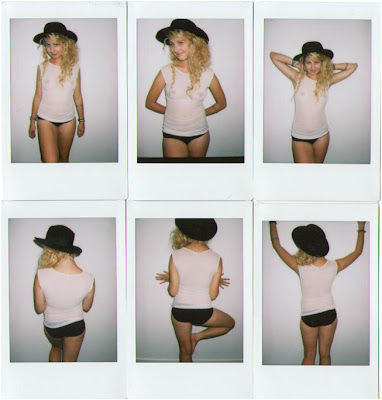100% HTML
31 designers from 13 countries transform and redefine the white t-shirt.
Curated by Triple-ajor to support Designers Against Aids.
Mundi,
Rykjavik, Iceland
At the age of 22, Mundi Vondi has already completed six collections, opened his own boutique in Reykjavik, and collaborated in several art projects internationally as one-third of the artgroup MoMs. His adventurous, oversized designs have earned him plenty of attention in Iceland and abroad. For the project, Mundi wanted to give the white t-shirt an identity. He spent six days wearing the t-shirt around Reykjavik, allowing random circumstances--by friends, food, or nature, among others--to leave their imprints. In this way, the t-shirt inherits a part of Mundi's experiences and adventures the same way a son inherits his father's history. Thus, following Icelandic tradition, Mundi named the t-shirt "Mundisson" to explain how, without context, the t-shirt would simply be a dirty garment with a hole in it. However, with context, "Mundisson" inherits its own life and story.
8045 by Boas Krisjansson's
Reykjarik, Iceland
Bóas Kristjánsson's progressive take on unisex knit garments has been gaining a lot of attention after his recent debut at Paris Men's Fashion Week, with his collection set to hit stores worldwide next summer. Yet his talents are not limited to design; Bóas also works with music, video art, and photography. For his project, he used photography to express the idea of a "negative T-shirt" by shooting a model draped with t-shirt fabric, covering all of her body except for her torso. In this way, Bóas leaves an interesting negative space and reverses the conventional relationship of t-shirt and skin. The use of aluminum highlights the gradation and adds dimension to the piece, qualities that feature consistently in Bóas's work.
Fifth Avenue Shoe Repair,
Stockholm, Sweden
Lee Cotter and Astrid Olsson of Fifth Avenue Shoe Repair express a high amount of respect for traditional tailoring, evinced by the shoe repair shop in London from which they take their name. At the same time, Fifth Avenue Shoe Repair's specialty lies in experimenting with new techniques to break conventional norms in fashion. This spirit is exemplified in the designers' creative process for Project White T-Shirt, in which Lee and Astrid reconstructed a white t-shirt by building a web of knots to create an elegant neck-piece. In this way Fifth Avenue Shoe Repair often experiments with new techniques as a starting point and guide from which they develop shapes and ideas.

























